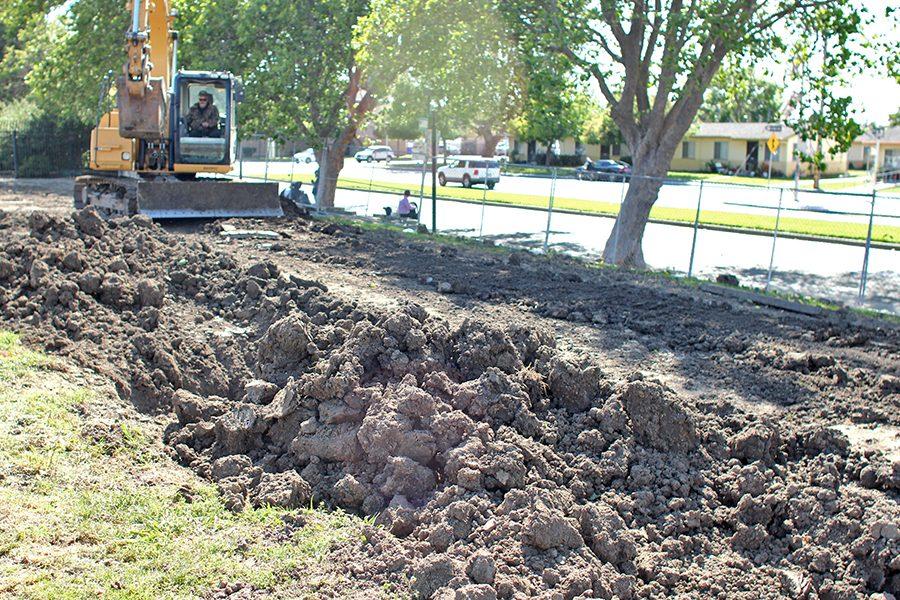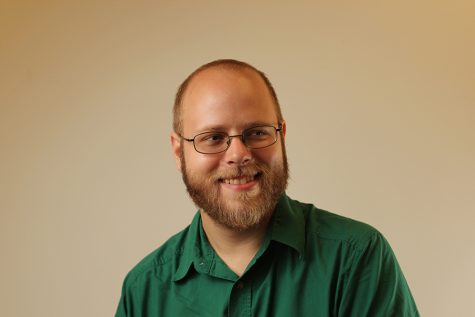Police Services construction moves location
Seismic instability requires search for fault traces
Christian Urrutia / The Advocate
Workers pack dirt into place by the Tennis Courts after Kleinfelder Inc. geologists checked the area for evidence of seismic activity on Wednesday.
May 9, 2016
The Campus Safety Center will be constructed to house Police Services, but seismic safety requires a lot of exploratory digging.
District Chief Facilities Planner Ray Pyle said, “It’s difficult to plan for construction (on Contra Costa College) because of the Hayward Fault.”
The fault runs directly through the Contra Costa College campus.
Buildings and Grounds Manager Bruce King said the $2 million CSC could be built by the Tennis Courts, where the old Handball Court is, or in Lot 4, where the Critical Solutions office is, or over part of Lot 1.
The Alquist-Priolo Earthquake Zoning Act requires that areas within 2,000 feet of a fault line be presumed dangerous, unless proven safe through seismic trenching.
Pyle said, “We have a red, yellow and green scheme (on the zoning map).”
King said, “Green is OK to build, red is forbidden, yellow needs testing.”
Pyle said, “Almost the whole lower half of the campus is yellow. We have to jump through hoops to make yellow areas buildable.”
Pyle said, “We’ve got to go dig some trenches,” so men from the Geological Survey were “down in a trench looking at dirt” last week.
“Geologists try to see if there are signs of fault traces from the last 11,000 years. If they don’t see any traces the CGS (California Geological Survey) gives permission (to build).”
King said the district hired Kleinfelder Inc. to do the tests, and they have finished the work for the handball court location.
“One problem they’re having is they’ve hit groundwater, so they have to keep pumps going.”
Pyle said CCC has a high water table. King said “The well (used to water the athletic fields and landscaping) never missed a beat in five years of drought.”
“They’re (using what they pump out to) water the landscaping, which suits us fine,” King said.
He said it takes two weeks to dig, test and then fill the 15-foot deep trench. Work started April 18, and finished Wednesday. King said, “After that it (will take) 10 weeks to make a determination on what they found.”
The seismic trenching by Comet Stadium about eight years ago was inclusively because it hit groundwater, King said. The high water table is likely to remain troublesome.
Pyle said, “If they do (find traces this time) the land essentially becomes unbuildable forever.”
District Police Chief Ed Carney said, “We have to do the seismic testing and hope we get at least one (suitable location).”
Police Services Corporal Tom Holt said, “We have to take what we can get.”
King said the CSC’s design is “a twin” to the one built at Los Medanos College.
Carney said they will be identical buildings, with modular design and construction.
“We’re doing that for economy of scale. If the design meets our needs, why reinvent the wheel,” he said. “We’re hoping to do them both at the same time.”
Because they’re modular they can be built offsite, then brought in once the site is ready, reducing build-time in spite of the seismic trenching work.
Pyle said the CSC will be single story, occupying 3,200 square feet.
King said no definitive decision will be made until we know what’s green, yellow, or red.
Carney said, “We’re still waiting on those results.”
King said Kleinfelder, Inc. is contracted for the Lot 1 location already, but the trenching for Lot 4 cannot be done until August, when the office is no longer needed.
Holt said there are pros and cons to each potential location for reasons of space, parking and proximity.
King said the Handball Court is not used for games anymore, but the athletic department and Buildings and Grounds use the Handball Court for storage.
Police Services is currently in the R Building, at the edge of the east side of campus.
Holt said, “It’s a little run down. People don’t know we’re here. We say ‘we’re next to Buildings and Grounds,’ and people say, ‘Where’s that?’”
King said the R Building will be torn down and made into parking. Buildings and Grounds and the custodial department will move into the Applied Arts Building.



